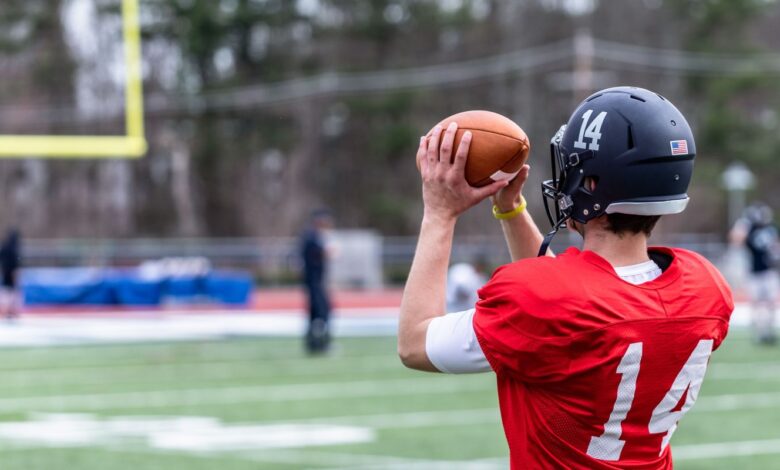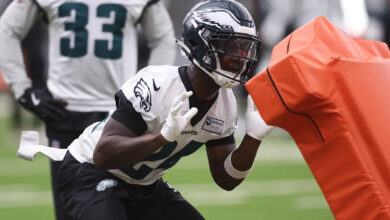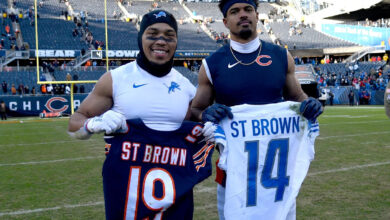How Processing Speed Makes a Good Quarterback Great

Beyond Physical Prowess: The Mind of an NFL Quarterback
It’s NFL draft season, an exciting time for football enthusiasts and fantasy football players alike. The NFL draft takes place starting on April 24 in Green Bay, Wisconsin, where 250,000 people are expected to be there to cheer on their teams. Most of these fans recognize that observing on-field performance is crucial for evaluating potential players. However, other critical factors often determine success at the professional level. The factors that extend beyond physical attributes and include psychological functions such as processing speed, working memory, reaction time, and decision-making. If you listen to too much sports radio, as I do, you’ll frequently hear about how athletes “process” the game, whether that be football, basketball, or many other sports.
Why Processing Speed Is Key for Quarterbacks
Football requires quick processing of information for many positions, including wide receivers who need to anticipate where there will be openings in the field of play and linebackers who must recognize where there might be gaps in the offensive line where they can initiate a tackle. However, quarterbacks tend to have the most cognitive load. They make decisions during every play because they must recognize what the defense is doing and make pre-snap decisions (before the play is initiated). Often, they need to “quickly” adjust plays at the line of scrimmage based on film studies where their working memory skills help them keep stored information in mind as they “work” on a solution. For NFL quarterbacks, rapid and efficient information processing is paramount. They must fluently recognize, diagnose, and react to the ever-changing dynamics of the defense.
When psychologists talk about processing speed, they refer to the fluency with which the brain can take in, interpret, and respond to received information. Quarterbacks must anticipate defensive player movements and, within split seconds, identify open areas of the field. This requires swift reaction times and the ability to process visual information rapidly. Noticing subtle cues like a defender’s body language or foot placement can be the difference between a successful play and an interception. Most quarterbacks will need to release the ball in under three seconds. In this respect, processing speed requires fluency in receiving, understanding, and responding to information. The quarterback uses other cognitive skills involving recognition, analysis, and judgment.
The Limitations of Physical Attributes Alone
Historically, many quarterbacks have been drafted in the first round based on impressive physical attributes, such as arm strength and athleticism. There is a litany of NFL quarterbacks taken in the early rounds of the draft with excellent physical attributes whose lack of professional success has been attributed to how they process the game. Often, those quarterbacks who lack strong decision-making skills, struggle to process information effectively, or cannot dissect complex defensive formations in real-time fail to succeed. Therefore, evaluating a quarterback’s information processing and reaction capabilities is crucial for NFL teams.
Those with strong cognitive skills are more likely to reach their potential, even if their physical skills are less exceptional. In the 2025 NFL draft, expert Mel Kiper, Jr., described how quarterback Shedeur Sanders can process information efficiently. Kiper suggests that this will help him to be drafted higher than his physical skills might warrant. Historically, seven-time Super Bowl winner Tom Brady is the poster boy for the fast processing of information. He was the 199th player drafted in the 2000 NFL draft because his “measurables,” such as his footspeed and throwing arm, were unremarkable. However, he excelled due to his ability to quickly process information, diagnose defensive strategies, and make successful decisions.
Processing Speed in Action: Pre-Snap and Post-Snap Decisions
Processing speed is vital before and after the ball is snapped, especially when quarterbacks face intense defensive pressure. One critical cognitive skill is tracking multiple targets. Psychologists have developed various tools to measure and improve these tracking capacities, including neuropsychological testing and video game-like assessments. One video game-like tool uses 3D multiple object tracking to challenge and enhance cognitive functions like spatial awareness, attention, and processing speed. While the data is mixed as to how effective this training is generalized to the real world, there are some promising aspects to this type of screen-based training (Vater et al., 2021).
Cognitive Flexibility and Memory Retrieval
Processing speed also aids in quickly retrieving information from memory and effectively utilizing working memory for decision-making. Quarterbacks must be cognitively flexible, rapidly adapting their decisions without lengthy deliberation. Consider decision-making that needs to occur within three seconds when your first and second options are problematic. It doesn’t matter how hard and accurately you throw a football; it’s imperative that you find a third option. This is what quarterbacks, particularly those at the highest levels, are confronted with in their play.
Tools for Assessing Processing Speed in Quarterbacks
There are now many companies that evaluate not only athletic traits but also cognitive skills that play a role in quarterbacking and other positions. Testing can measure athletic IQ or cognitive skills such as perception speed, visual search efficiency, decision-making, and impulse control. Much of the testing consists of using video game-like tools. The research on these tools is limited, unlike the data connecting video games to improved processing speed outside of sports (Dye et al., 2009). Interestingly, some of the tools for strengthening on-field processing are also screen-based.
- Athletic Intelligence Quotient (AIQ): Measures visual-spatial processing, reaction time, decision-making, and learning efficiency. Many AIQ tests align with the Cattell-Horn-Carroll (CHC) theory of cognitive abilities (Bowman et al., 2020).
- S2 Cognition Test: Assesses perception, speed, visual search efficiency, decision complexity, and impulse control. It also measures tracking capacity, complex decision-making, and the ability to control external distractions. Higher S2 scores correlate positively with a quarterback’s career passer rating.
Decision-Making Essential Reads
Notable Quarterbacks With Exceptional Processing Speed
Beyond Tom Brady, several quarterbacks have been recognized for their exceptional information-processing abilities. Peyton Manning was known for his pre-play defensive analysis. Dan Marino and Joe Montana became notable for their quick reaction time and decision-making. Currently, Patrick Mahomes is lauded for his rapid decision-making and spatial awareness. While Mahomes possesses impressive physical attributes, his ability to visually process information quickly, react swiftly to stimuli, and recognize angles on the field sets him apart.
Beyond Quarterbacks
Processing speed is only one of many factors that contribute to being a successful quarterback. Other factors include competitiveness, self-confidence, resilience, motivation, self-discipline, and passion. While physical skills are essential, cognitive factors like processing speed and working memory have recently been recognized as key to distinguishing between a player with potential and a consistently successful performer. Assessing these cognitive skills before drafting players is vital. Exploring some of the tools that may be on the horizon for improving the speed of processing will be helpful, not only for the quarterbacks of the future but also for students and others where slow processing of information creates roadblocks to success.
Source link




